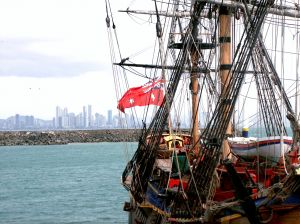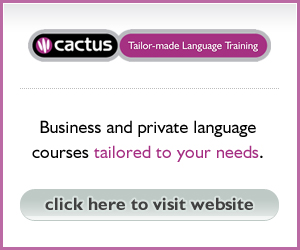Sailing Through Central America: Panama and Costa Rica
Tuesday, 17th March 2009

Jan Ambler recounts her fascinating trip to Costa Rica and Panama, and explains why these two beautiful countries are definitely worth a visit.
This was the year for Panama and Costa Rica - it had been on the ‘must see’ list for so long and had been recommended by friends and family alike.
They are two of the small countries that make up Central America. The region is referred to officially as Central America and Panama since the latter was annexed from Colombia at the turn of 20th century and became independent during the building of the Panama Canal.
The finer organisational aspects this trip were largely based around how to see this masterpiece of engineering. We had been given a wonderful book called the ’Path Between The Seas‘ written by the well-known American author, David McCullough, so we were reasonably knowledgeable before we left. We wished to sail through the canal but during the day, and if possible on a smallish boat. There are various ways it can be done - many people travel through on massive cruise ships and others just go halfway in small pleasure boats.
Interestingly, the canal goes from north to south since Panama is on the Isthmus of Central America and goes from west to east - something I had not thought of until it was pointed out to us there!
We sailed from the Caribbean to the Pacific and since the canal is only 50 km long it generally takes no more than a day. It is hard to explain just how impressive the trip is - especially knowing the history of its building. It took no less than 50 years to build and had been first thought about in the 16th century as a shortcut between the Pacific and the Caribbean. We are lucky enough to have been down to Punta Arenas in Chile which is almost Cape Horn, so realise the vast distance ships had to sail before the canal was opened. It is said to reduce sailing times by 9 days! This region of course is all Spanish-speaking but surprisingly it was the French who first started to build the canal - under a man named Ferdinand de Lessops, an entrepreneur who was assisted initially by a well known French engineer - Eiffel.
Sadly due to malaria and yellow fever many lives were lost in its construction and it was finally completed 50 years later under the USA and Roosevelt in 1914 at enormous cost. The building was also complicated by the different tidal heights between the two seas and the fact that there is a mountain range and a river to cross. The Gatun Lake was created to compensate the height difference and boats come via 3 sets of locks - the Gatun, The Pedro Miquel and the Miraflores which are at each end and here the ships are lowered and raised accordingly. Passing through the locks is complicated and ships are pulled/helped by individual trains. This was the reason we preferred to be on a smallish boat - so we could see as much as possible! We did not want to miss a single minute of the action!
The height of the water in the lake is maintained by water from the rain forest which surrounds the canal since 240 inches fall every year. Thus the rain forest is very important and will always be preserved. This forest extends over a vast area and into Costa Rica where their travel industry is mainly eco tourism. We felt so pleased to think this forest would be preserved for ever along with all the wildlife in it - hopefully for generations to come.
In the beginning, America owned and administered the canal but it has now belongs to Panama and is their main source of income - ships from all over the world use it and in fact they are building a new canal parallel to the existing one to allow the huge new boats through.
We spent a day in Panama City - a bustling high rise city - obviously on the ‘up’ with lots to see and do. Panamians, like the Costa Ricans are friendly and welcoming. Before we went through the canal we visited the San Blas islands, 365 small islands where the Kuna Indians live. On the pacific side we visited another group of indigenous Indians in the Darien Province - one of the most ecologically diverse regions of Central America and it was lovely to see local people living in remote areas largely unaffected by modern times.
Once in Costa Rican waters we anchored and went on small zodiacs to the shore where we walked in the rain forest and saw exotic birds, flowers and butterflies and snorkelled on a wonderful reef. On the mainland we also visited volcanoes, waterfalls and visited a coffee plantation which is Costa Rica’s other main source of income.
It was a truly wonderful and varied experience. Each of the two countries has so much to offer - Costa Rica with its eco tourism and wonderful beaches and Panama with the canal - one of mankind’s most incredible endeavours. Added to all this we found the people all so friendly and welcoming - the whole trip was filled with life- enriching experiences and we would thoroughly recommend it, irrespective of how you choose to do it.
More about language courses in Panama
More about language courses in Costa Rica
Tags: spanish, language, history, language course
Posted by Laura Harrison under Experience Cultures, Blogs,
Permalink
